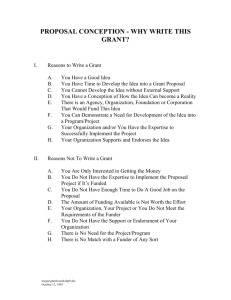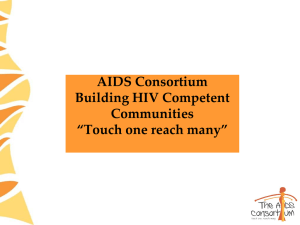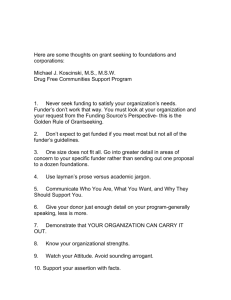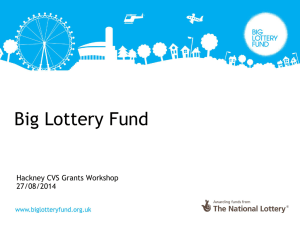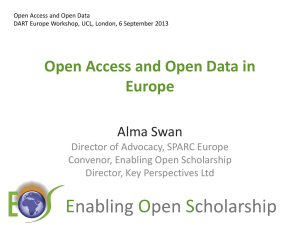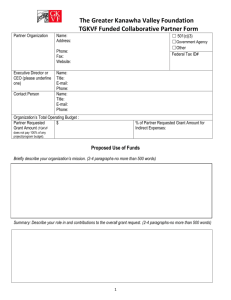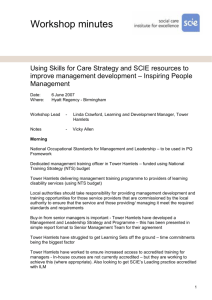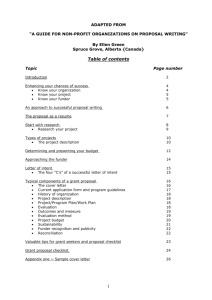From the point of view of the funder:
advertisement
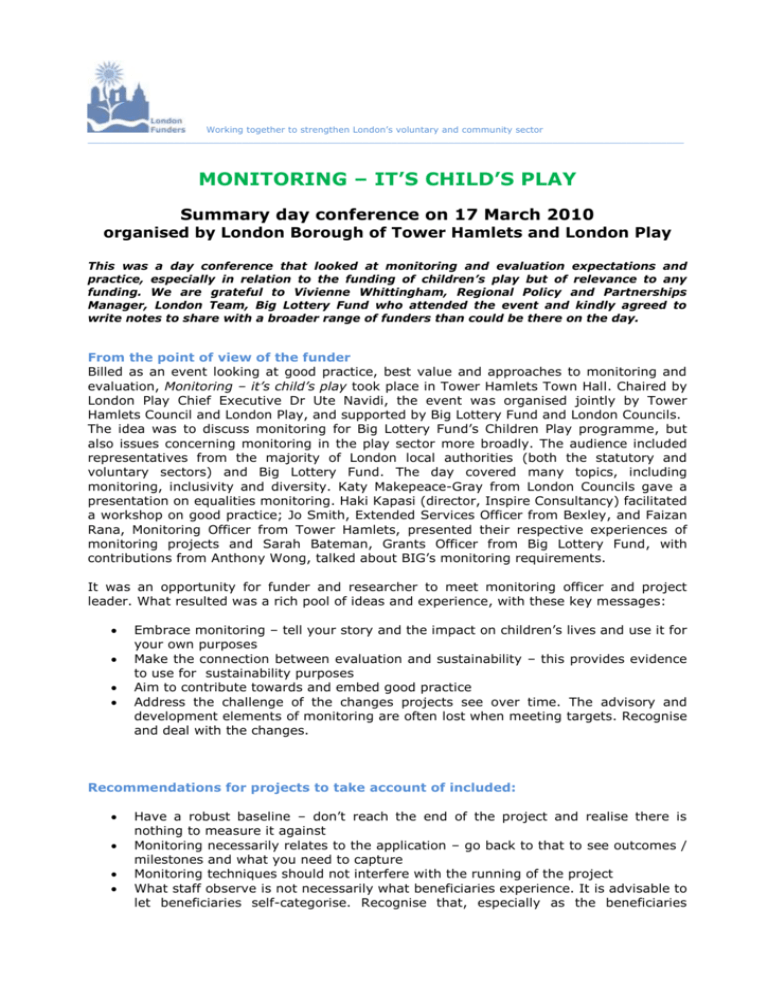
Working together to strengthen London’s voluntary and community sector ________________________________________________________________________________________________________ MONITORING – IT’S CHILD’S PLAY Summary day conference on 17 March 2010 organised by London Borough of Tower Hamlets and London Play This was a day conference that looked at monitoring and evaluation expectations and practice, especially in relation to the funding of children’s play but of relevance to any funding. We are grateful to Vivienne Whittingham, Regional Policy and Partnerships Manager, London Team, Big Lottery Fund who attended the event and kindly agreed to write notes to share with a broader range of funders than could be there on the day. From the point of view of the funder Billed as an event looking at good practice, best value and approaches to monitoring and evaluation, Monitoring – it’s child’s play took place in Tower Hamlets Town Hall. Chaired by London Play Chief Executive Dr Ute Navidi, the event was organised jointly by Tower Hamlets Council and London Play, and supported by Big Lottery Fund and London Councils. The idea was to discuss monitoring for Big Lottery Fund’s Children Play programme, but also issues concerning monitoring in the play sector more broadly. The audience included representatives from the majority of London local authorities (both the statutory and voluntary sectors) and Big Lottery Fund. The day covered many topics, including monitoring, inclusivity and diversity. Katy Makepeace-Gray from London Councils gave a presentation on equalities monitoring. Haki Kapasi (director, Inspire Consultancy) facilitated a workshop on good practice; Jo Smith, Extended Services Officer from Bexley, and Faizan Rana, Monitoring Officer from Tower Hamlets, presented their respective experiences of monitoring projects and Sarah Bateman, Grants Officer from Big Lottery Fund, with contributions from Anthony Wong, talked about BIG’s monitoring requirements. It was an opportunity for funder and researcher to meet monitoring officer and project leader. What resulted was a rich pool of ideas and experience, with these key messages: Embrace monitoring – tell your story and the impact on children’s lives and use it for your own purposes Make the connection between evaluation and sustainability – this provides evidence to use for sustainability purposes Aim to contribute towards and embed good practice Address the challenge of the changes projects see over time. The advisory and development elements of monitoring are often lost when meeting targets. Recognise and deal with the changes. Recommendations for projects to take account of included: Have a robust baseline – don’t reach the end of the project and realise there is nothing to measure it against Monitoring necessarily relates to the application – go back to that to see outcomes / milestones and what you need to capture Monitoring techniques should not interfere with the running of the project What staff observe is not necessarily what beneficiaries experience. It is advisable to let beneficiaries self-categorise. Recognise that, especially as the beneficiaries include children, some categories are difficult to record and are hidden, e.g. disability or ethnicity There is a role for independent evaluators, e.g. beneficiaries can express themselves more freely with an independent observer than with project workers There is value in seeking to work with a range of agencies to collect additional monitoring information, e.g. schools Monitoring is undertaken by diverse people like project leaders, playworkers, finance officers – who necessarily have to come together to understand the project and are involved in effecting change for the better – but it is good practice for one person to own it and co-ordinate the returns Monitoring reflects accountability and data should be measurable and relevant Unexpected outcomes are of interest to the funder. Grant recipients should be encouraged to think about these. Recommendations for funders to demonstrate good practice The importance of both grant recipient and funder talking to each other was stressed, and funders need to constantly reiterate their willingness to work together whatever way they communicate, i.e. website, leaflets, verbal communication, etc Funders need to appreciate and understand that things change. A series of snapshots gleaned from monitoring are not the same as seeing a moving picture Monitoring forms and guidance should be simple and relevant The person doing the monitoring is not necessarily the same person who made the application. They may never have seen the application. The funder needs to be aware of this and the difficulties this can present Categories in monitoring should be meaningful. Too many categories may be irrelevant especially considering beneficiaries are mostly children at play, e.g. religion, sexuality. These are just the headlines – behind which is a lot more need for work and development. The discussions were thought-provoking and interesting–and demonstrate that monitoring and evaluation needs to keep developing alongside the projects.
